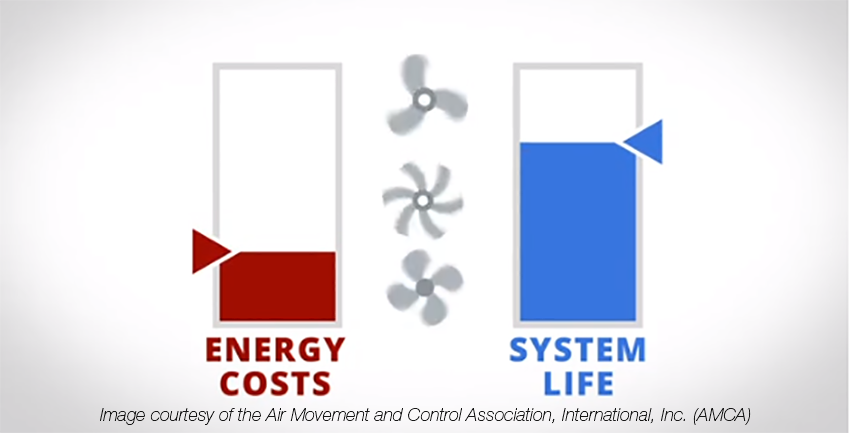
FEI is replacing other fan energy metrics in energy standards and local codes, and is being used in utility rebate programs. Understanding FEI is therefore of the utmost importance for engineers.
Simply, FEI is the ratio of a reference fan’s electrical input power to an actual applied fan’s electrical input power. (Figure 1)
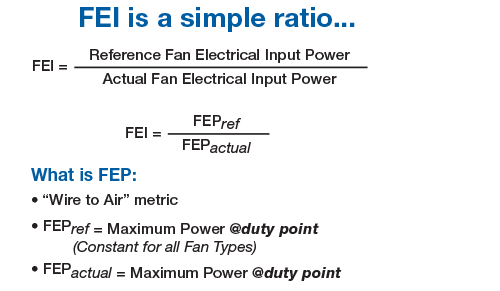 |
| Figure 1 |
If the reference fan electrical input power is the same as the actual applied fan’s electrical input power, the FEI is 1.00.
If the actual applied fan’s electrical input power is less, the FEI is greater than 1.00.
If the actual applied fan’s electrical input power is more, the FEI is less than 1.00.
The FEI metric’s intent is also simple: to reduce and save electrical power. Using the FEI metric allows the input power for different fan selections in an application to be compared, identifying which fan will save more energy (be more efficient). An FEI of 1.10 will save approximately 10% more power than a fan with an FEI of 1.00. Easy-peasy!
If a standard such as ASHRAE 90.1 requires fans to have a minimum FEI of 1.00, this means that fans with a lower FEI (say 0.85) will not be acceptable, as they are using more electrical input power than the reference power.
FEI Saves More Energy than Previous Metrics
Previous metrics focused only on the fan efficiency or the shaft brake horsepower input to the fan.
The FEI metric includes electrical power input to the fan system, including the efficiency impact of motors and drives. (Figure 2)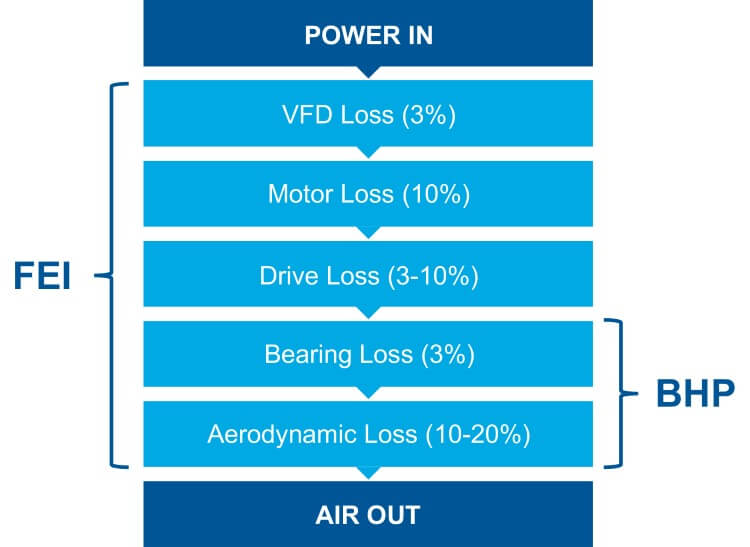 |
| Figure 2 |
Additionally, FEI ratings are based on either static or total pressure applications (total pressure for ducted fan applications and static pressure for un-ducted pressure applications).
How do manufacturers show their FEI values?
The FEI metric can be presented in tabular form in a manufacturer’s selection program for various fan sizes (and models) that meet the application’s design duty point. (Table 1)
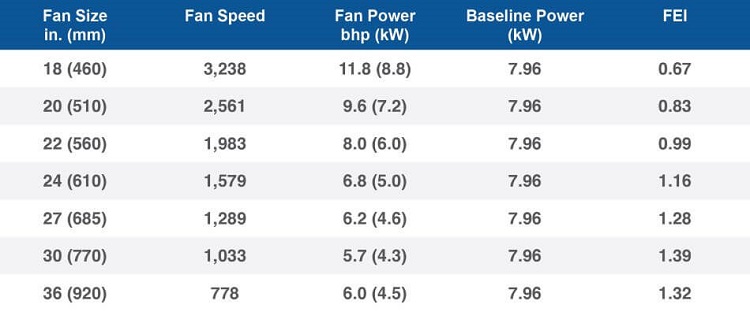 |
| Table 1 |
On a multiple speed performance curve for a specific fan model and size, the FEI values can be shown as FEI areas or “bubbles,” highlighted for values above 1.00. (Figure 3)
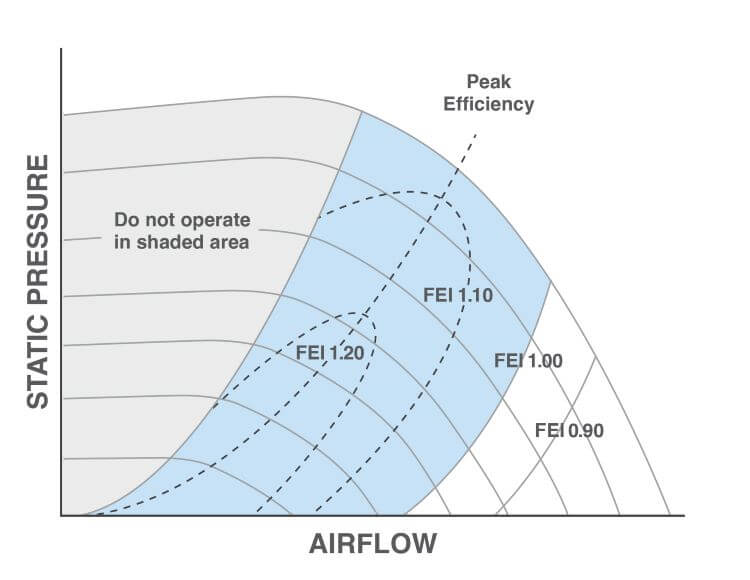 |
| Figure 3 |
How accurate is FEI, and what program certifies it?
Although any manufacturer can present FEI values for its fans, the only way to guarantee performance, efficiency and power consumption is by specifying and purchasing fans that have AMCA (Air Movement and Control Association) certified ratings. The AMCA CRP (Certified Ratings Program) certifies manufacturers’ FEI ratings for specific fan models and sizing/selection software that supports FEI ratings. Project and code compliance can be accomplished by assuring that fan submittals meet the project’s specification documents requiring that the fans are listed in AMCA’s CRP and bear the AMCA CRP label.
You can find AMCA-certified FEI ratings for fan systems in Greenheck’s eCAPS® online product selection program. Click here to go to eCAPS.
Codes/Standards Fan Energy Index Fans

from